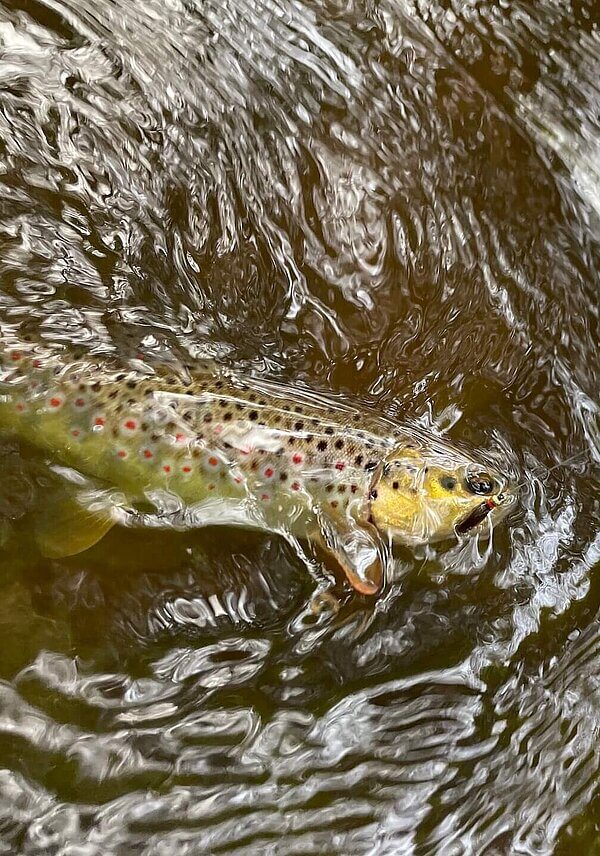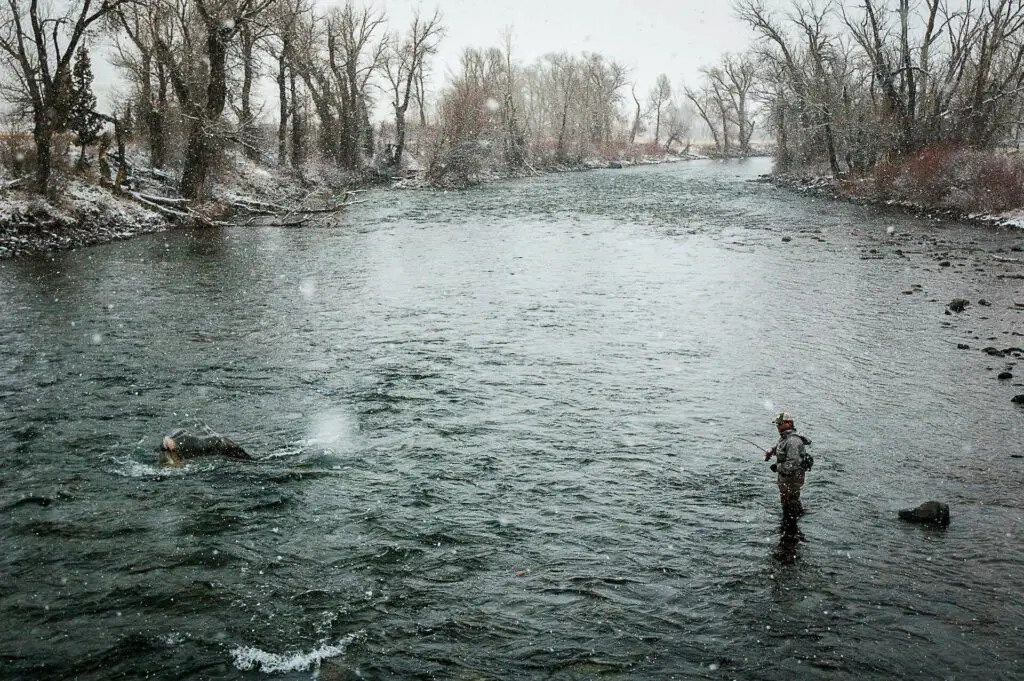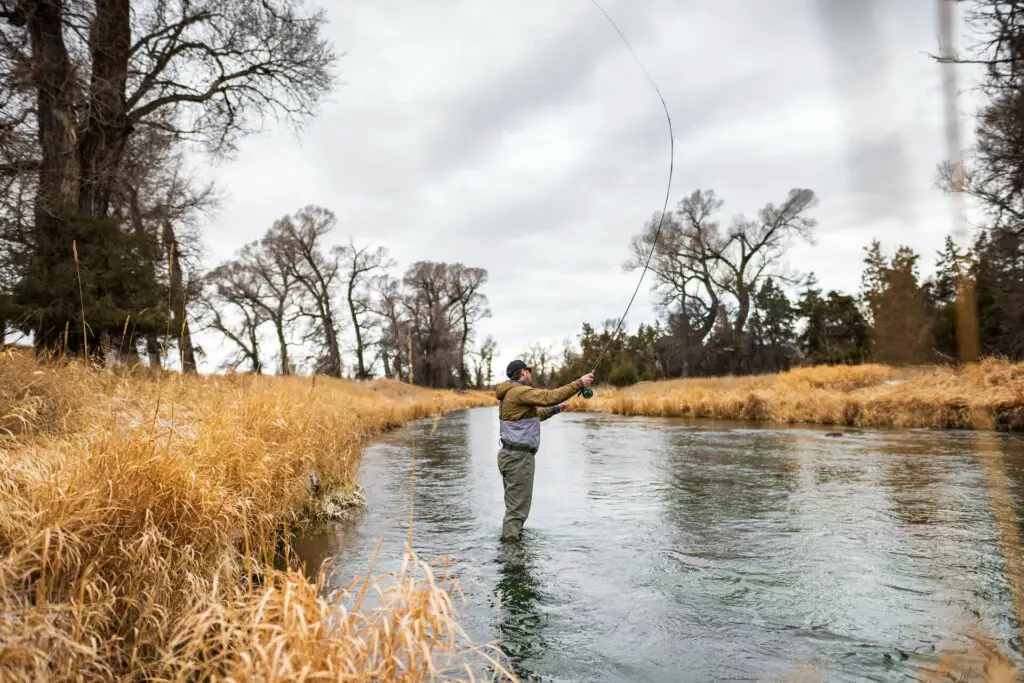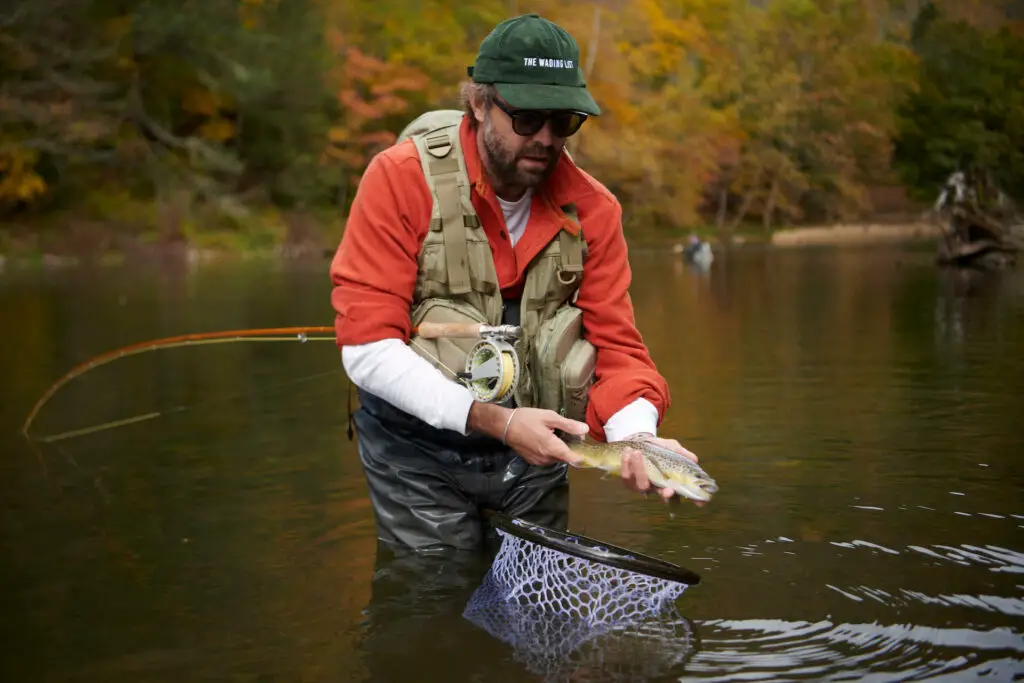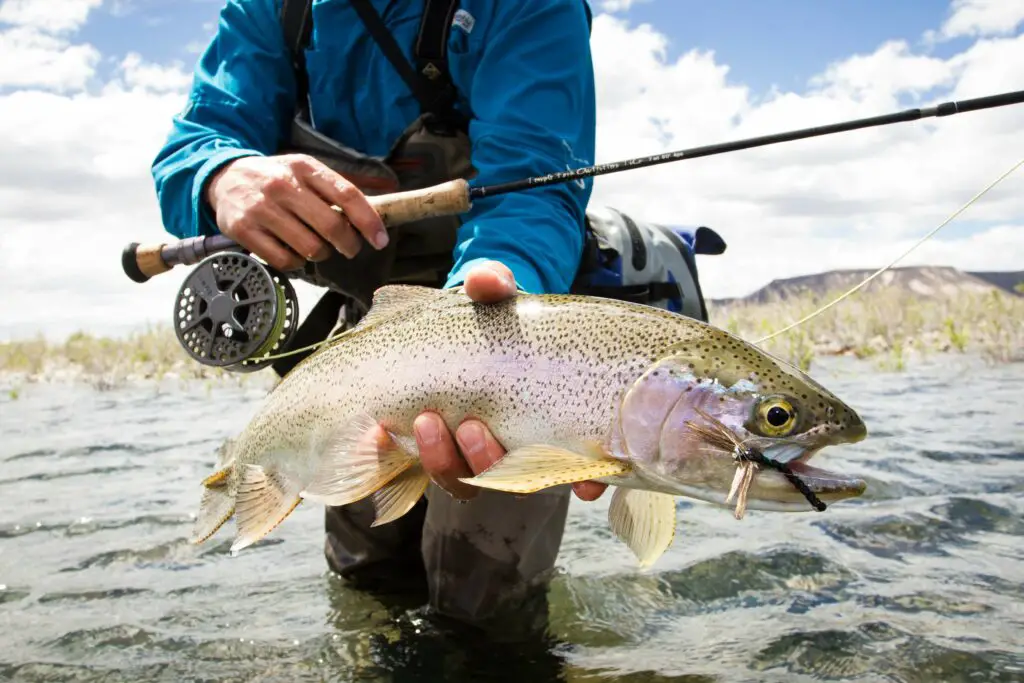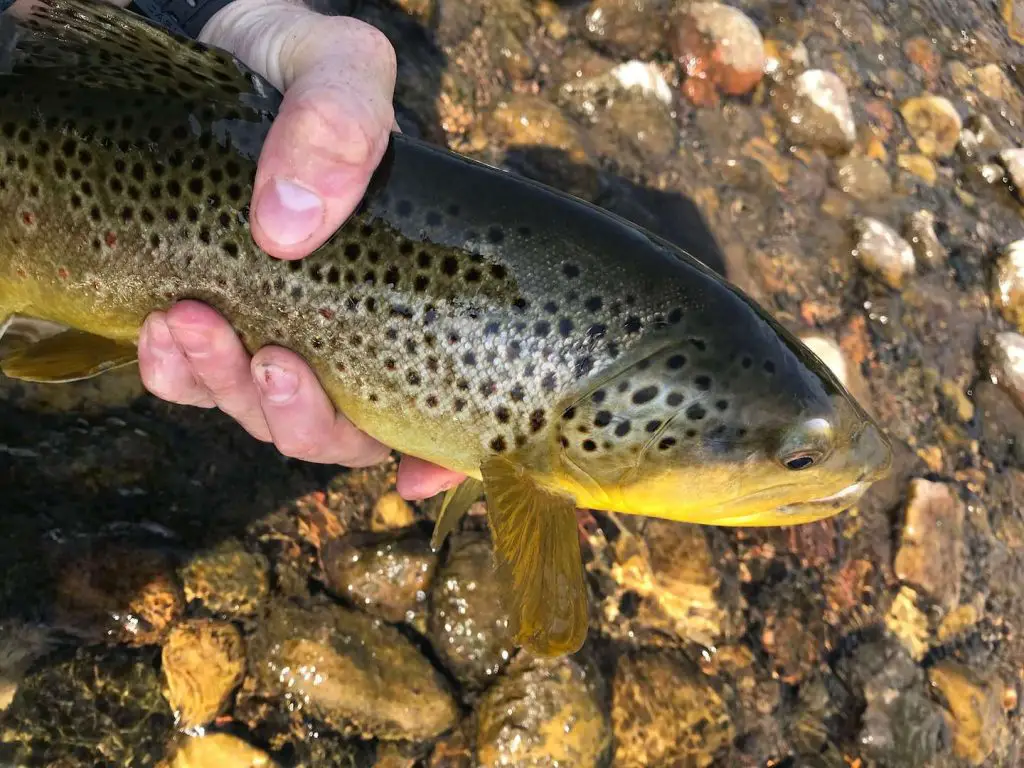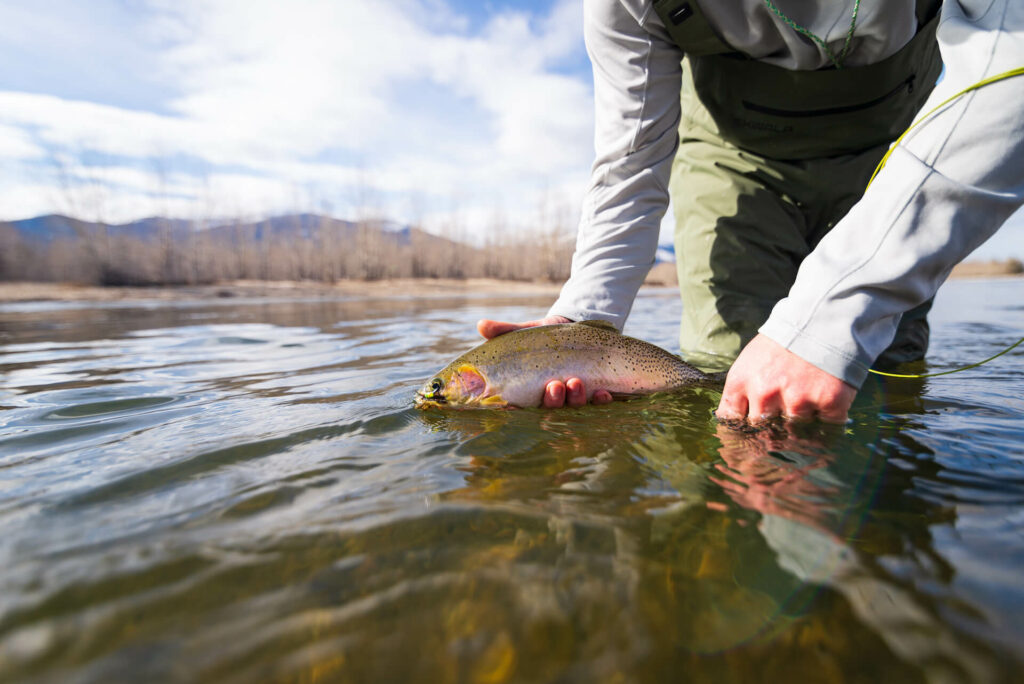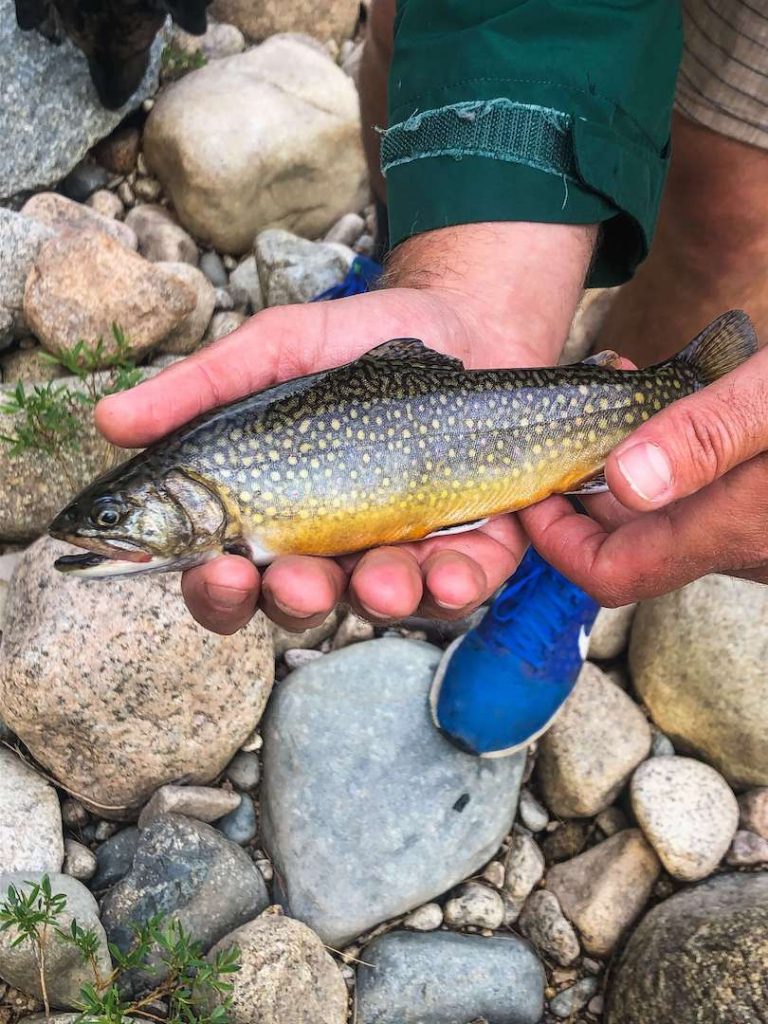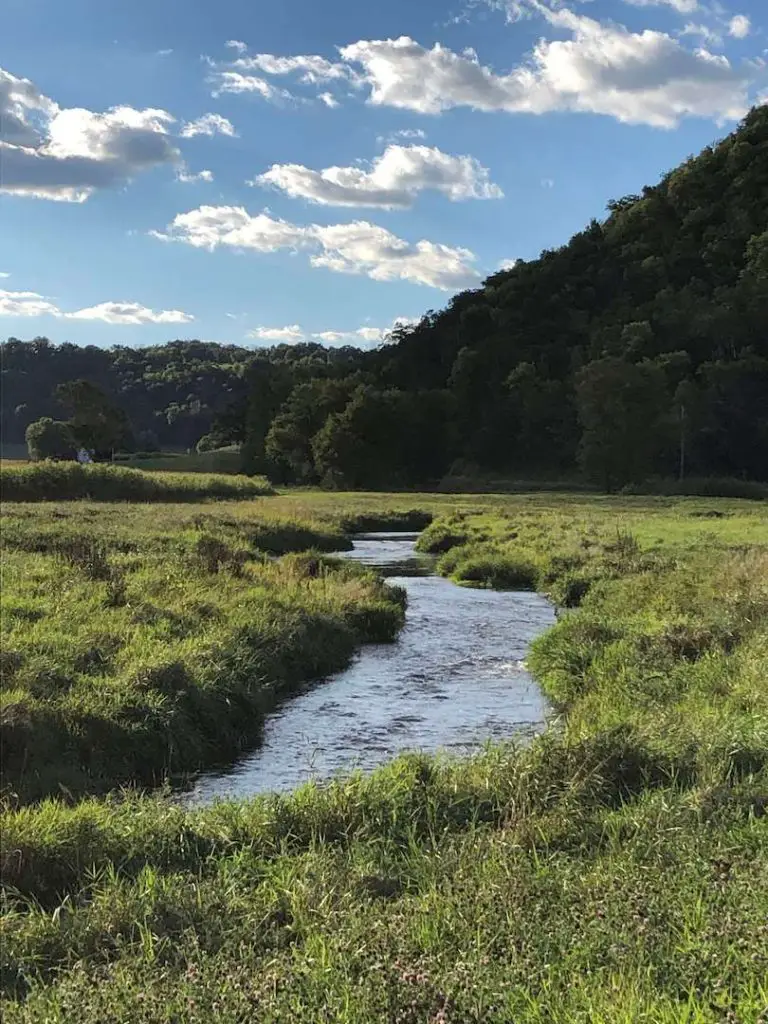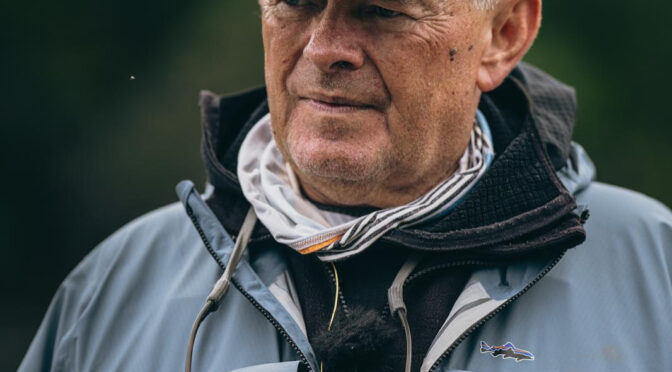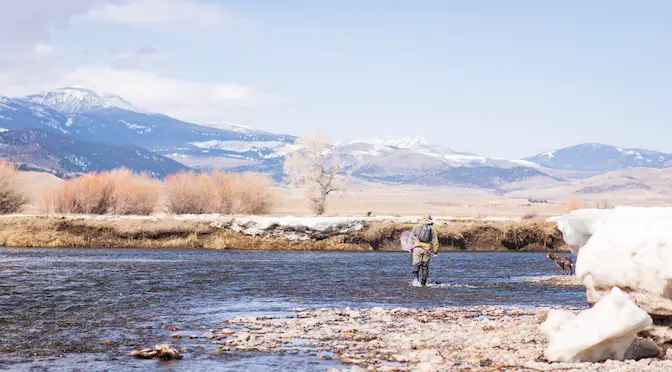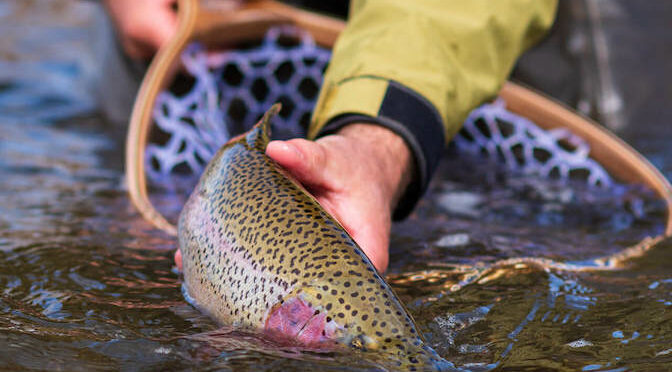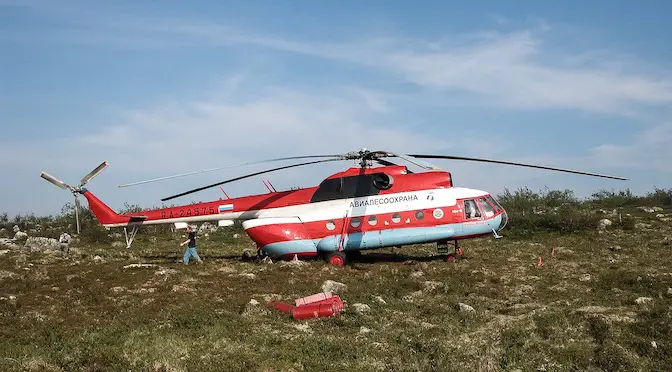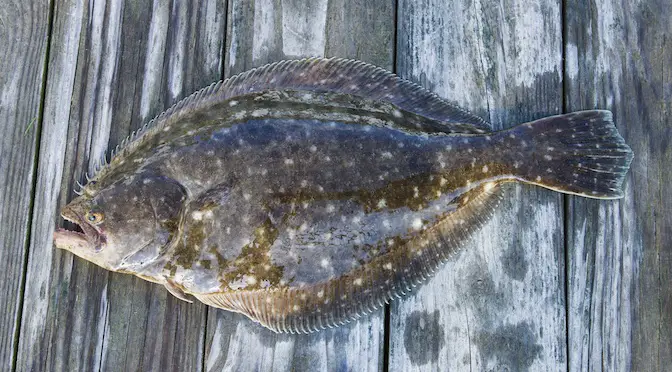- Can YETI’s new backpack deliver? Thoughts on the YETI CAYO - November 20, 2025
- How to Put a Worm on a Hook: Proven Methods for a Perfect Bait - November 18, 2025
- How to Fish in a River: An Essential Guide to Proven Techniques - November 18, 2025
This article talks about how to find trout in rivers and streams.
It covers how trout move throughout the seasons and even during a single day. You’ll also learn about different types of streams and how the environment affects where trout live and what they eat. It’s all about understanding the water and the fish.
Understanding Trout Movement
Trout are always on the move, and where you find them can change a lot. It depends on the season, the time of day, and even recent weather. What works in one river might not work in another, so you need to be flexible and pay attention to how things change.
Daily and Seasonal Shifts
Trout don’t just stay in one spot. They move around based on different factors:
Time of Day: During the day, trout often hang out in protected spots, feeding but maybe not super aggressively. When a lot of insects hatch, especially in the evenings when it’s getting dark, trout will move into slower, shallower water. This makes it easier for them to grab a lot of bugs quickly. Places like the tail of a pool or any slow, shallow water near deeper areas are good spots.
Insect Hatches: If you don’t see many insects, fish near cover or deeper water. But if you see a lot of bugs on the water, start looking in those slower, shallower spots you might usually ignore.
Seasonal Changes: Just because you caught trout in a spot in April doesn’t mean it’ll be good in May or June. And where you catch them in June might be empty in August.
Winter and Early Spring
In winter and early spring, trout prefer deeper, slower water. They aren’t feeding much and need to stay out of strong currents. Look for places where they have some access to current, as they need it to hold their position. When water temperatures are low, they don’t need a lot of food and won’t move far to eat. Think of places where trout can “loaf” – these are called winter refuges. Log jams and deep pools are especially good. They’re tough to fish, but trout will come out into the open near them to feed.
Time of Day: In winter and early spring, the best time to fish is usually the middle of the day. Even a small increase in water temperature can get trout feeding. They might even rise for small mayflies or midges, but small nymphs are usually the most effective.
Spring Runoff: High, cold water from spring runoff makes fly fishing hard. Trout stay glued to the bottom in slower spots. You’ll have trouble getting your fly down to them, and they won’t move much for a fly. You need to fish where you know trout are holding and get your fly close to the bottom, drifting at the same speed as the current. Methods like Euro nymphing work well here.
Spring and Summer
As waters drop in the spring or after runoff, trout move from their winter spots into faster, shallower water. This is where insects hatch and drift, and trout move in to take advantage of the food. Some might stay in deep pools, but you’ll start finding fish more spread out in faster, shallower water.
When mid-summer brings low water, you’ll find trout close to faster water, especially riffles, because the current brings them food. As water levels drop, current will only be in specific places. Ripples on the surface are good for hiding trout from predators like birds.
Foam Lines: In deeper pools, always look for the foam line. This is like a signal that tells you where food is drifting. Follow the foam line through a deep pool, and you can guess exactly where trout are feeding. All the good food gets swept into that foam line.
Reading the Water: Real-World Conditions
Sometimes, what you know about reading the water needs to be adjusted based on what’s actually happening. For example, you might go through slow, flat pools that look perfect for fish, but catch nothing. Then you catch all your fish in faster riffles, even if the water temperature is fine for the deeper pools. This means you need to pay attention to what the fish are actually doing.
For instance, a good spot might be in a riffle with fast water and a foam line, especially if there’s a slight deep cut or depression. You can tell it’s deeper if the water looks a bit darker or if the rocks on the bottom disappear.
Fall Fishing
Lower water temperatures in the fall make trout more active, especially where summer temperatures might have been too high. Trout will be in all kinds of water, from fast riffles to deep pools. However, fall trout don’t feed as much as they do in spring and summer. They aren’t trying to pack on weight for winter like grizzly bears. They will feed, but not as actively, so adjust your expectations.
Spawning: Brook and brown trout spawn in the fall, so you might find them in unusual places as they move to their spawning grounds. Sometimes they do odd things. You might even catch a fish when you’ve done everything “wrong.” For example, a brown trout might chase a dry fly stripped upstream.
Aggression: Brook and brown trout also get more aggressive before spawning and will attack streamers. This isn’t because they’re feeding more; they’re just getting nasty and trying to get potential threats out of their way. This is why you often get short strikes to streamers in the fall – they’re not eating, just trying to clear their space.
Migration: Some fish only move 50 yards for spawning, while others migrate many miles.
How to Find Trout in Rivers: Fishing in High Water
What happens when a big rainstorm makes the river dirty and much higher? Trout have adapted to floods for thousands of years and are rarely bothered by high water. They don’t get washed away. As the water gets higher, the surface velocity increases, but the slower spots they occupy near the bottom don’t change much. Trout will either wait it out in their normal resting places or move into slower, shallower water along the banks.
Catching Fish: If they stay in deeper water, they’re tough to catch because you can’t get a fly down to them with all that fast surface water. You have to wait for the water to drop or use a lot of weight. Those that move to the banks can be caught with careful casts into shallow water, even if it’s high and dirty. You might see fish rising, but if not, work your fly carefully, even in places that were dry before the rain.
Streamers: A great tactic for high water is an actively fished streamer. When streams flood, minnows and crayfish get pushed out of their usual spots and become disoriented. They’re more vulnerable, and trout sense this and often go on the prowl.
Trout Species and Habitat Preferences
Knowing what species of trout are in a river can help you narrow down where to look. For the most part, different trout species have overlapping habitats and are often found together. But if a river mainly has one species, you can look for their preferred habitat.
Rainbow Trout
Rainbow trout are better at feeding in fast water. Their bodies are more efficient, so they can feed in faster currents than other trout. But don’t just look for them in fast riffles or the heads of pools; they can be in very slow water too. Look in all likely places, but don’t ignore the very fast stuff you might pass up in brown trout or cutthroat rivers.
Rainbows seem to be able to “surf” the water in fast currents, finding spots where they can stay and feed even without nearby cover. They also seem to be more migratory than other species, even in smaller rivers without an outlet to a big lake or ocean. They might be in one part of the river today and gone a few days later. So, if you’re fishing for rainbows, don’t be afraid to move around a lot.
Brown Trout
Brown trout evolved in the slower, richer waters of Europe. They are more likely to be in the slower parts of pools and runs than in very fast water, though you can catch them in fast water if there are small pockets of slower water. You’ll find them more often closer to structure and in slower water than rainbows.
Unlike other trout, they seem to be “binge feeders.” If there isn’t a hatch or a lot of food, they might just chill out and be hard to catch – some call them moody. Brown trout are also more likely to feed in low light, like early morning, just before dark, and at night. If a river has mostly brown trout, don’t get discouraged if you don’t catch fish right away. They can become active with just a slight change in light. On dark, rainy, misty days, brown trout are often more eager to play. This might be because they’re more cautious, or because more insects hatch on cloudy days, bringing them out to feed. If you have a choice, fish a brown trout river on a cloudy day.
Cutthroat Trout
Cutthroat trout, though related to rainbows, prefer slower water, similar to where you find brown trout. Like browns, they often prefer to feed close to cover, especially the big ones. One thing to know about cutthroats is that they like to feed in very shallow water, especially during a hatch. Pay attention to water that’s even shallower than the usual two to four feet where you look for trout. They can be seen feeding in riffles with their backs out of the water.
Cutthroats are very surface-oriented, so a dry fly is almost always your best choice in rivers where you find them. The idea that trout feed 90% below the surface doesn’t really apply to cutthroats. If you use a hopper-dropper rig, you’ll often catch most of your fish on the dry fly, and they might ignore the nymph.
Another important thing about cutthroat behavior is that they rise very slowly to a dry fly. If you’re used to catching rainbows or brookies, you might pull the fly out of their mouths, especially with big ones. You need to pause a bit when setting the hook on cutthroats. While some say cutthroats are “dumb” and easy to catch, this isn’t always true, especially in some areas where they can be tough and selective.
Brook Trout
Brook trout prefer to be close to the main current but off to the edges of the faster water. Like browns, they prefer to be closer to cover. Brook trout evolved in the less fertile environments of mountain rivers and colder, less fertile waters at higher altitudes and latitudes. So, they position themselves to get the most out of drifting food.
In northern rivers where they live with pike, they also stay in the main current to avoid the pike, which don’t like fast current. In these places, where brook trout grow large but have a short growing season, they take advantage of every bit of protein they can get. They are just as aggressive on mouse patterns as brown trout in these locations. People often call brook trout “dumb” because they seem easier to catch, but they are perfectly adapted to cold, infertile waters where brown or rainbow trout can’t survive because there isn’t enough food. Brook trout have evolved to take advantage of every possible piece of food in the water; they eat first and ask questions later.
Types of Trout Streams
Anglers use non-scientific terms to classify trout streams based on their water source and geology. These classifications tell us a lot about trout habitat and where to find trout.
Freestone Streams
Freestone streams are fed mainly by snowmelt and seasonal rains, with little influence from underground springs. They are naturally unstable, and water levels change a lot throughout the season. They usually flow over impermeable rock like shale, sandstone, or granite. Dissolved minerals are low, and the pH is typically acidic. Because they are unstable and lack dissolved nutrients from the rocks, these streams usually have a sparse food supply. Trout grow slower here and are often found close to the main current, which brings them food. Even though food is sparse, it can be diverse, with all kinds of aquatic insects, especially bigger mayflies and stoneflies.
Flies: Bigger, bulkier flies work well because trout are used to eating larger bugs. Terrestrials (land insects) are also a very important part of a trout’s diet because aquatic insects aren’t as abundant. Because food is sparse, trout will be eager to take most flies if presented correctly.
Identification: You can spot freestone streams by their water color and stability. When not in flood, the water will be crystal clear with little algae on the rocks and no aquatic plants, or it might be stained a tea color from tannic acid from snow and rain runoff through woodlands. Their banks will show signs of frequent high water, like wide gravel banks and driftwood piled up, or flood debris high up in trees.
Limestone Streams
Limestone streams are more common in the East. When water flows through limestone or dolomite, calcium and magnesium minerals dissolve into the water, making what we call “hard water.” These minerals, in ways not fully understood, help plants and insects grow, giving trout a more abundant food supply. These minerals are also needed for crustaceans like crayfish, scuds, and sow bugs to grow, which further increases the food available to trout. Trout in these streams grow larger.
Flies: Along with standard insect imitations, flies that imitate crustaceans are very effective. Dissolved minerals can be quite high, and the pH will be more alkaline. Because of the rich food supply, trout might feed in places further from the main current, like backwaters or in slower current. They don’t need to be in the main current to get enough food. Trout will be pickier about fly selection here than in freestone rivers, and you might need to change flies often. They have a lot of food, so they can afford to be choosy.
Identification: Limestone streams will have more aquatic plants, especially in backwaters. The water almost always has a slight milky tint from the dissolved minerals.
Spring Creeks
Spring creeks get most of their water directly from underground springs, usually in limestone bedrock. Limestone is porous and often forms large underground rivers that eventually come to the surface. The flow in these streams is very stable because they are not much affected by snowmelt or rainfall. This extreme stability, combined with lots of minerals in the water, creates a perfect environment for trout. The current is usually slow and steady, the water is always clear, and aquatic plants are abundant. Water temperatures and flows are nearly constant, leading to a very rich food supply and a long growing season for trout.
Trout Behavior: Because of the slower flows, rich food, and constant conditions, trout can and will live almost anywhere. This makes it tough to “read the water” in a spring creek because trout aren’t concentrated in certain areas. It’s best to be careful and look for trout everywhere. Luckily, because the water is clear, you can spot them easily. However, spring creek trout, with their abundant food and clear water, can be very difficult when it comes to fly selection and presentation. This is often called “PhD fishing.”
Tailwaters
Tailwaters are rivers formed by the outflow of a reservoir. When water flows into a deep reservoir, the temperature layers, with cold water staying near the bottom even in summer. If the water coming out of a dam comes from the bottom of the reservoir (which it usually does), the water will be constant, like in a spring creek – warmer than a freestone river in winter and colder in summer. Also, reservoirs concentrate nutrients in the water, so the outflow is rich in nutrients and provides abundant food for trout.
Downstream Changes: Tailwaters change as they flow downstream from dams. Close to dams, trout have a rich food supply with lots of midges and crustaceans, and trout are in many different places. Like a spring creek, these waters are tough to read, and trout might be fussy about fly patterns and found almost anywhere.
Further Downstream: As you get further downstream from the dam, the food supply becomes less abundant but more diverse, with more stoneflies, mayflies, and caddisflies. Here, you should start looking for trout in the more obvious places like riffles, current seams, and the heads and tails of pools.
Not all streams fit perfectly into these categories. Some tailwaters might act more like freestone streams, and others are more productive than spring creeks. Some limestone streams might look like freestone rivers but still have a richer food supply. These are just general guidelines. Every trout stream is a little different, and where you find fish in your stream might be a bit different from what you’ve learned here. These tips are meant to help you, but the most satisfying part of fly fishing is when you read the water, guess where a trout will be, put your fly there, and catch a fish.
How to Find Trout in Rivers and Streams Conclusion
As you can see from our extensive guide, there are many approaches on finding trout in streams and rivers. The success depends on a number of factors. Open your eyes when you get to the river and try to think like a fish. Where would you hold? Where would you feed. Another good option if you’re just starting out is to take notes and thereby remember what has worked in a certain situation and build on that experience the next time you head out to fish.

